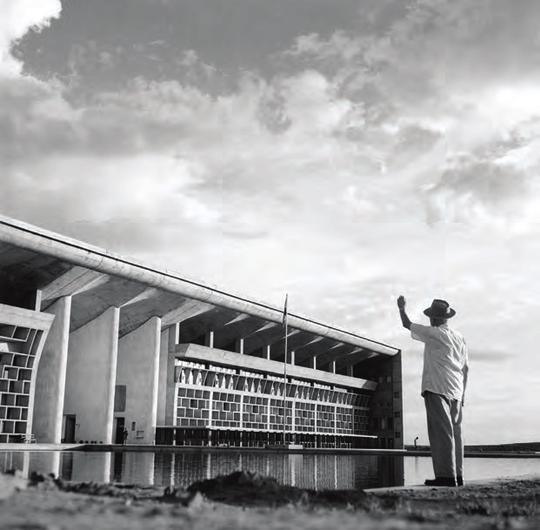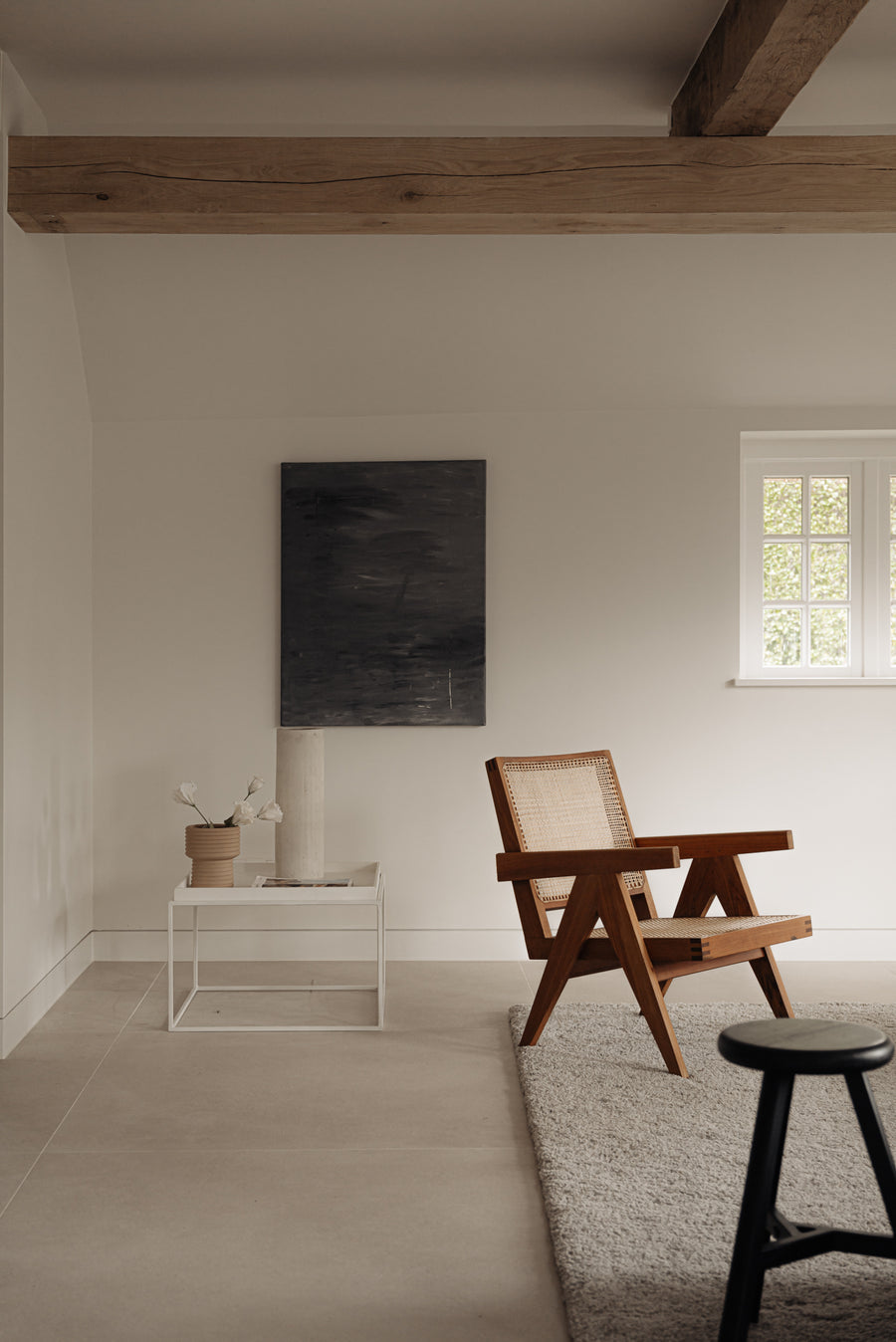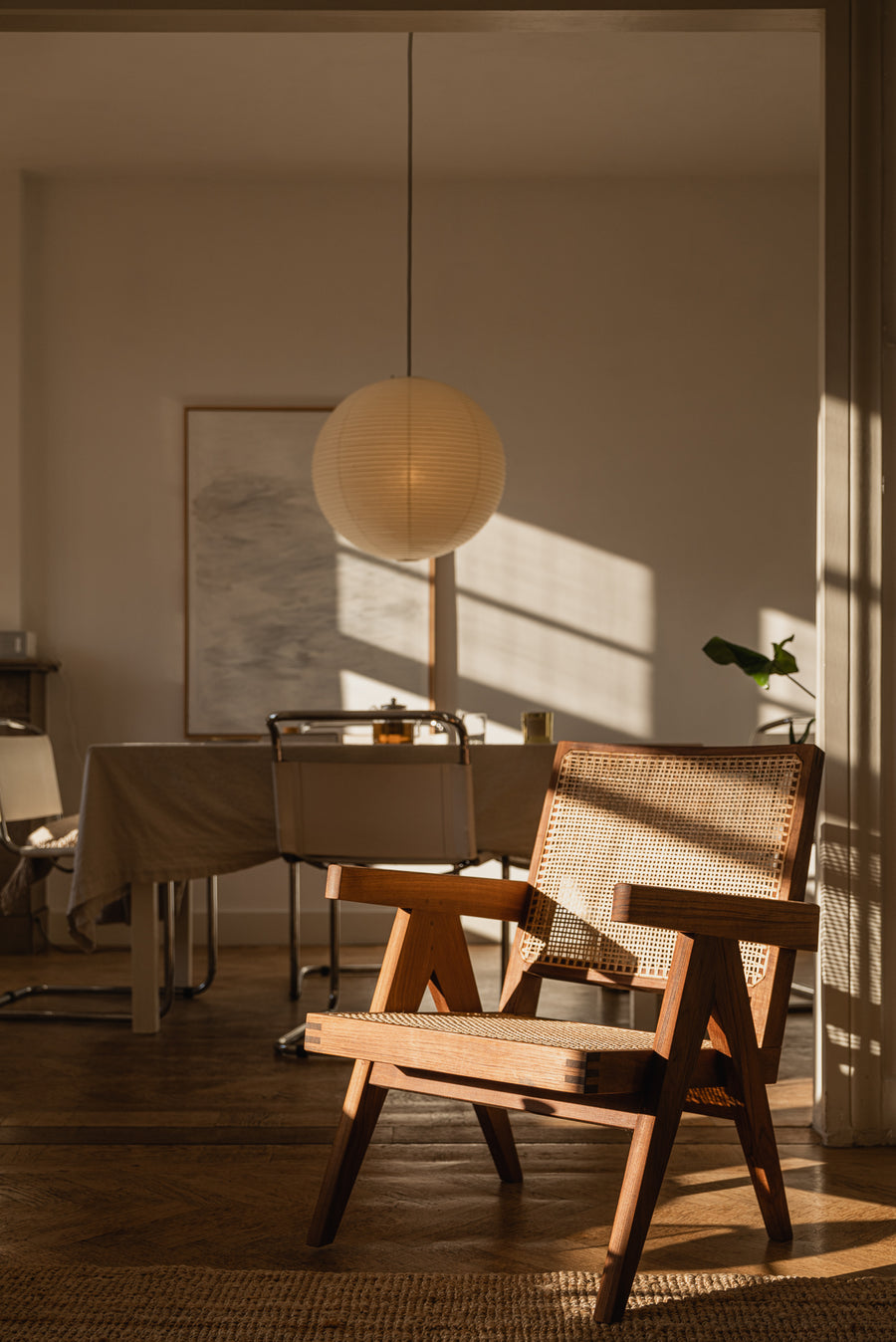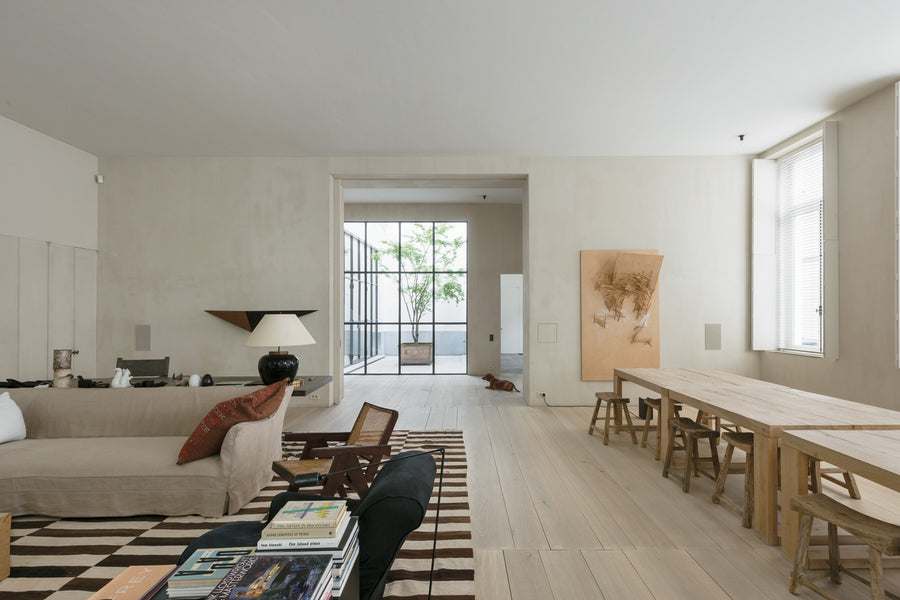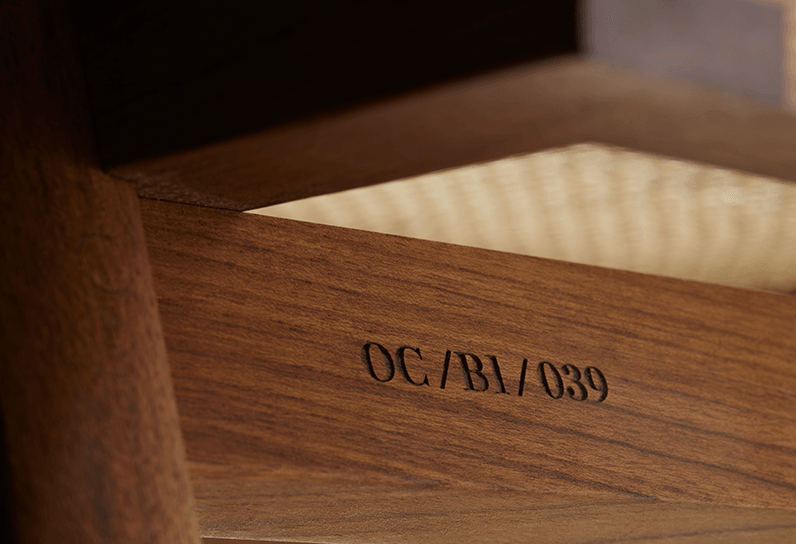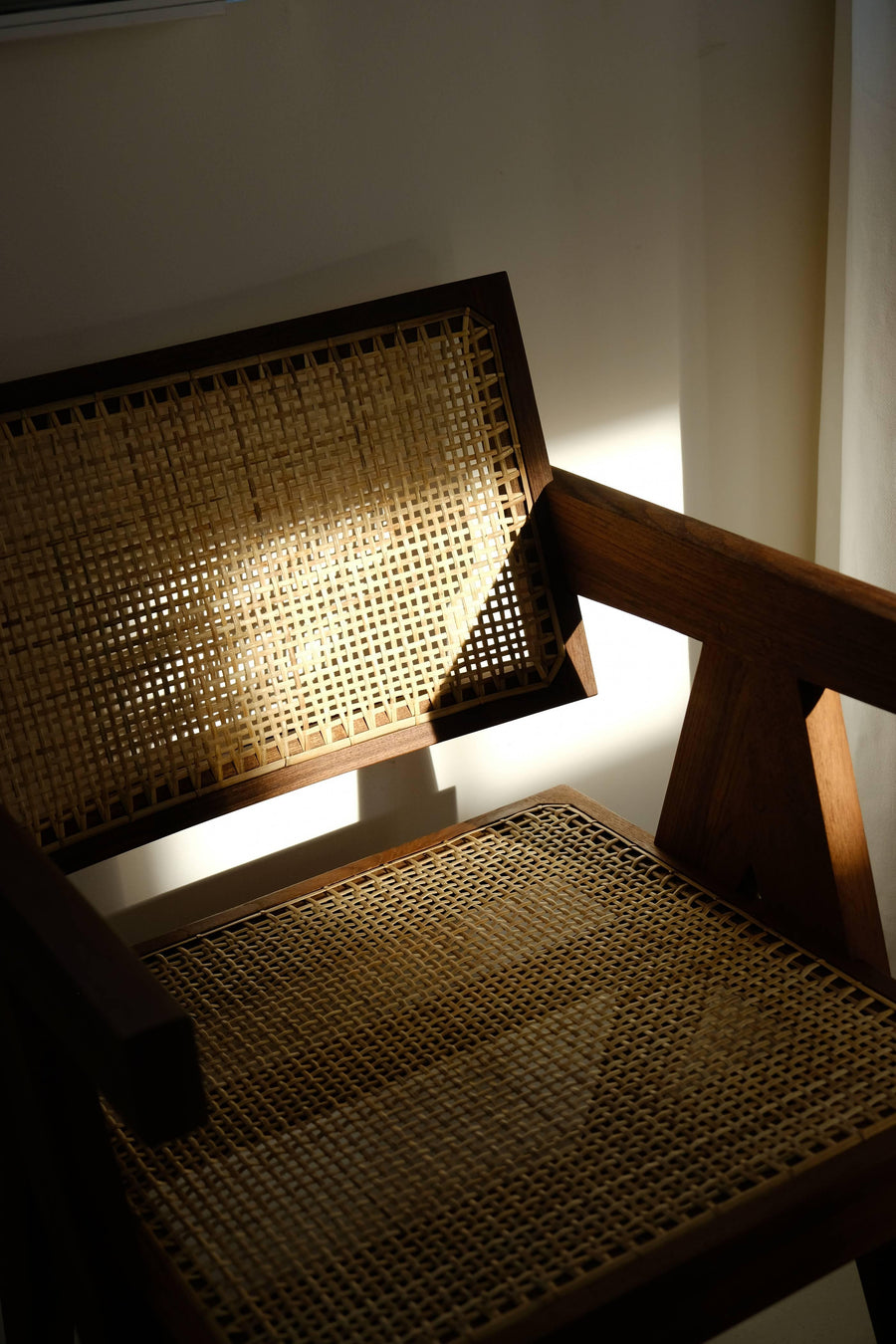Since its inception in the 1950s, Pierre Jeanneret’s Chandigarh office chair has experienced fluctuating levels of popularity. In the past twenty years however, it has ascended to iconic status, prompting multiple re-editions. At Object Embassy we aspire to stay true to the original design by using the same traditional materials and production techniques. In the first in our series of blog posts, we’d also like to retell the story of the creator as we believe this is inseparable from the design.
Architect and designer Pierre Jeanneret was born in Geneva in 1896. He cultivated a progressive architectural philosophy that integrated thoughtful design solutions into everyday living. He developed a refined aesthetic without skimping on practicality. Throughout the 20th Century, he aimed to make quality design accessible beyond the privileged classes and improve standards of living by creating harmonious and functional interior spaces. Jeanneret is best known for his enduring collaboration with his cousin, the architect Charles-Édouard Jeanneret, better known by his pseudonym: Le Corbusier. Together they worked on several architectural projects, notably the Villa Savoye and the Pavillon Suisse of Cité Internationale Universitaire in Paris.

Chandigarh
The partnership went on hiatus when Jeanneret joined the French Resistance and they didn’t work together again until they designed the city of Chandigarh. Initiated in 1951 following India’s independence from Britain, a brand new capital city that was harmonious with the native Indian culture was needed. The city was also an emblem of what India's first post-Independence Prime Minister Jawaharlal Nehru called “the nation’s faith in the future,” an emblem of the post-colonial ‘New India’. He cemented this mission by commissioning Modernist design figurehead Le Corbusier to design the city. He enlisted the help of his cousin in the project. The pair collaboratively designed the city’s architecture while Jeanneret also designed furniture for the city’s inhabitants.

Jeanneret utilised local materials and used carpentry workshops that employed local craftsmen. His consideration of supporting local industry and craftsmanship led him to combine the European Modernist ideals, with local materials such as teak and cane, which were cost-efficient and resilient to the humid climate. The simple designs of Pierre Jeanneret and the use of economical local materials allowed the mass production of sleek, minimal yet nevertheless functional chairs. As trends and tastes changed, the original chairs were discarded by the residents of Chandigarh in favour of more modern pieces. In the early 2000s they were sought after by French collectors and auctioned off at a premium price. Original Pierre Jeanneret chairs are now coveted pieces of vintage furniture and firm favourites of designers, celebrities and interior design enthusiasts worldwide.

After such a surge in popularity, there are numerous re-editions presently on the market paying homage to the original. Object Embassy is one of such producers of the chairs working with unparalleled attentiveness for these early design choices. Our chairs are made of teak, just like the originals. Furthermore, our rattan is meticulously square-woven by hand in the traditional style as opposed to diamond-woven by machine. We also engrave each chair with an identification code, like Jeanneret’s original coding system. This allows each chair to be traced back to the source forest from which it was made and ensures that each chair is unique. By producing smaller batches of stock, we are able to work with a careful ethos that is reminiscent of Jeanneret: upholding the highest quality design practices at a modest price with a keen awareness for responsible production.

